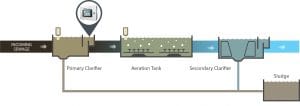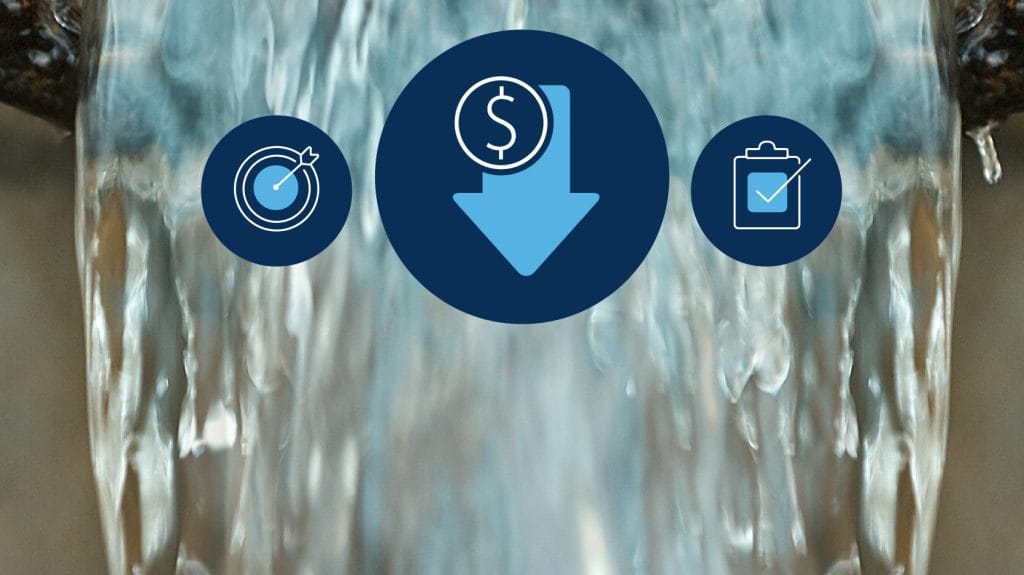PARAMETERS TO MEASURE FOR AERATION OPTIMIZATION
BOD, COD, TSS, DO
OVERVIEW
A significant portion of a wastewater treatment plant’s energy costs are due to aeration operations (~45-75% of the total energy). The required aeration rate of a biological treatment system is determined by three key parameters: incoming organic loading expressed in terms of COD or BOD, dissolved oxygen (DO) concentration maintained in the aeration tank, and the concentration of microorganisms maintained in the aeration tank expressed as MLSS. The benefits of real-time monitoring for aeration in wastewater include;
- Energy savings by optimizing the aeration rate to current water quality conditions
- Improved efficiency for organics removal
- Optimized aeration for the nitrification/denitrification process
CONTROLLING AERATION
Currently most control mechanisms for aeration systems rely on measuring DO in the aeration tank. This provides a feedback mechanism where DO
falling below a set point, usually 2 mg/L, indicates that more aeration is needed to increase the rate of oxygen transfer to the water. Although DO based
optimization strategies provide significant cost and energy savings as compared to no control, there is a time lag due to the feedback nature of the
information provided. Therefore, DO sensors act like an insurance policy rather than a true process control tool.
REAL-TIME COD/BOD MONITORING IMPROVES PROCESS CONTROL
It is possible to complement the information gained by real-time DO levels with real-time BOD/COD data obtained at the effluent of primary clarification for a more effective aeration control strategy that allows plants to operate with a more flexible margin around set DO levels, and adjust aeration rates dynamically based on the incoming organic load. Control data provided by two independently operating sources of sensors also increases operator confidence in the data.
Another advantage of monitoring BOD/COD in real-time before aeration is that, in addition to optimizing the aeration rate, it also enables the plant operators to optimize chemical dosing (e.g., settling aids such as ferric chloride) for enhanced sedimentation in primary and secondary clarifiers. Adjusting ferric chloride dosing to boost organics removal in the primary clarifier reduces the organic load going into the aeration tank, and thus also the energy demand. This way a plant-wide control strategy can be implemented for optimum BOD removal as opposed to focusing only on the aeration process.
Further, in industrial wastewater treatment, monitoring the organic load before aeration may provide the added benefits of optimizing nutrient dosing. For example, wastewater from pulp and paper plants is usually rich in carbon but lacks the proportional amount of nitrogen and phosphorus needed for microbial utilization of organics. Therefore, in addition to optimizing aeration rate, it is also possible to optimize nutrient dosing based on continuous organics monitoring.
________________________________________________________________________________________________________________________
RELATED POSTS
OPTIMAL NUTRIENT DOSE FOR WASTEWATER TREATMENT
MONITORING TOC, BOD AND COD IN WATER WITH UV-VIS
CONTAMINANT DETECTION IN WASTEWATER
GO BACK TO BLOG
![]()




